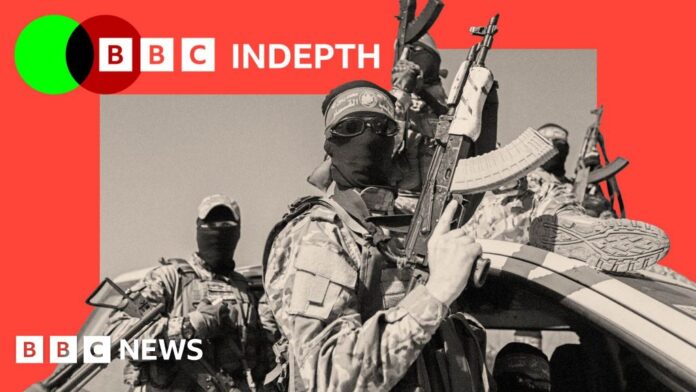Paul AdamsDiplomatic correspondent, Jerusalem and
Rushdi AbualoufGaza correspondent
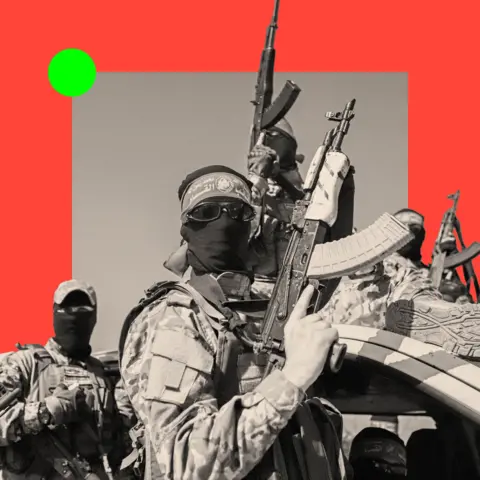 BBC
BBCHow does a group that has governed the Gaza Strip for almost 20 years, ruling two million Palestinians with an iron rod and fighting Israel in repeated wars, suddenly lay down its arms and relinquish control?
Judging by a steady stream of gruesome images emerging from Gaza since the ceasefire came into effect on 10 October, Hamas seems intent on reasserting its authority.
Its masked men, back on the streets, have been seen beating and executing opponents. Impromptu firing squads have dispatched kneeling men they say are members of rival groups, including some of Gaza’s powerful clans.
Other victims, cowering in terror, are shot in the legs or beaten with heavy clubs.
Some of those now being attacked by Hamas had been part of groups involved in looting and diverting aid, according to one aid worker I spoke to, exacerbating the humanitarian crisis. The UN has also accused criminal gangs of stealing aid.
This is not yet a world in which, as US President Donald Trump’s 20-point Gaza peace plan envisages, Hamas fighters turn over their weapons, submit to an amnesty, leave Gaza and hand over to an international stabilisation force.
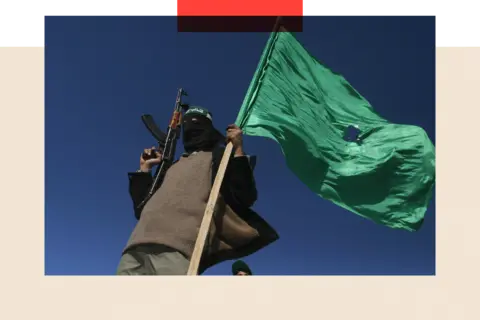 AFP via Getty Images
AFP via Getty ImagesFor his part, President Trump initially seemed ambivalent about the brutality.
On his way to Israel on 13 October, he signalled the US had given Hamas – designated a terrorist group by the US, UK, Israel and others – a green light to restore order.
“We have given them approval for a period of time,” he told reporters aboard Air Force One.
Three days later, he hardened his tone. “If Hamas continues to kill people in Gaza, which was not the Deal,” he wrote on Truth Social, “we will have no choice but to go in and kill them.”
So, where does this situation on the ground in Gaza today leave Hamas?
And ultimately, after two years of war that has resulted in unparalleled suffering for its own people and the violent death of most of its key figures, what, if anything, does the future really hold for the group?
‘A complete loss of law and order’
For many Gazans, traumatised and exhausted by two years of perpetual suffering – and a war that has killed 68,000 people in Gaza according to the Hamas-run Health Ministry – this ugly endgame is nerve-wracking, but doesn’t come as a surprise.
Of the Gazans I spoke to – among them, aid workers, lawyers, as well as a former adviser to a Hamas leader – each has a different take on the likelihood of Hamas laying down its arms and relinquishing control.
And indeed – given the situation on the ground – whether now is the time for them to do so.
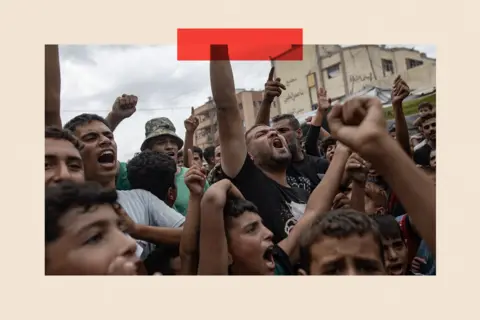 Anadolu via Getty Images
Anadolu via Getty Images“It’s been two years with a complete loss of law and order,” aid worker Hanya Aljamal says from her home in Deir al-Balah, in the middle of the Gaza Strip. “We need someone to take over.
“As unqualified as Hamas is to rule the Strip, they are a better option than the gangs.”
Dr Ahmad Yousef, a former advisor to Ismail Haniyeh, who was Hamas’s political leader, is of the opinion that a firm grip is needed at present.
“As long as there are still people who try to take the law into their hands, we need somebody to scare them and squeeze them to the corner,” says Dr Yousef, who now runs a Gaza think tank and remains close to the Hamas leadership.
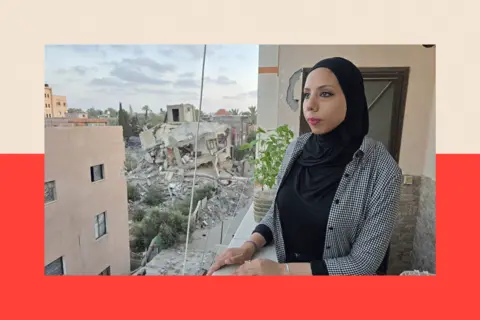
“This will take time. Not a long time. Within a month we will host those police forces and soldiers from Turkey and Egypt,” he continues, referring to the international stabilisation force for Gaza, outlined in the peace plan, that could be composed of troops from Egypt and Turkey, among others.
“This is the moment where they will set their guns aside.”
Other Gazans are more sceptical, and fearful. Some aren’t convinced that Hamas will give up their power – or weapons at all.
Moumen al-Natour, a Gaza-based lawyer imprisoned several times by Hamas, is one of them.
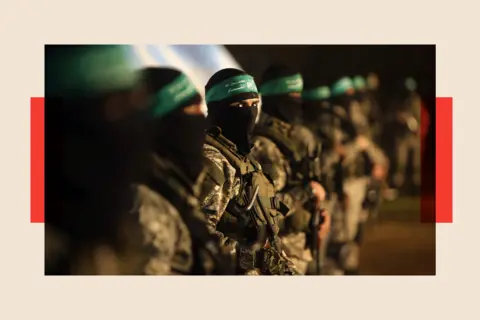 AFP via Getty Images
AFP via Getty ImagesHe has been in hiding since July, when he says masked Hamas gunmen came to his Gaza City apartment and ordered him to report to al-Shifa hospital for interrogation.
“Hamas is [sending] a message to the world and to President Donald Trump… that they will neither relinquish power nor hand over their weapons.
“If I fell into Hamas’ hands now, they would make a video and kill me in the street with a shot to the head,” he says in one of a series of videos sent to us from an undisclosed location in the Gaza Strip.
The wall behind him is riddled with bullet holes.
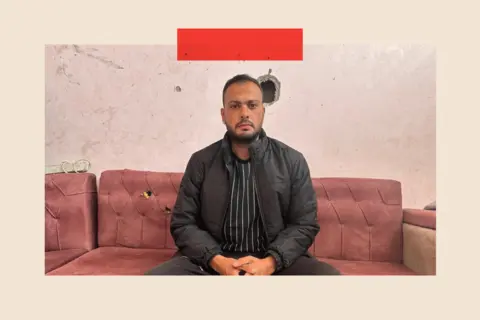
“It is a gang, not a government,” he says of Hamas.
“I don’t want them to remain in Gaza… I don’t want them in government, and I don’t want them in security. I don’t want to see their ideas spread in mosques, in the streets, or in schools.”
‘Still the dominant player in Gaza’
Mr al-Natour has his own take on what Gaza could look like.
The disparate array of militias now under Hamas assault could, in his view, be integrated a new security apparatus. But with their competing agendas, sometimes murky pasts and, in some cases, controversial links to the Israeli military, it’s a problematic proposition.
“The fact is – and sometimes it’s very hard for Israelis to admit this – that Hamas still exists and is the dominant player in Gaza.” says Dr Michael Milshtein, a former head of the department for Palestinian Affairs in Israeli Military Intelligence.
“Relying on suspicious players – clans, militias, gangs, many of them criminals, many of them affiliated with ISIS [the Islamic State group], many of them involved in terror attacks against Israel – and considering them as a kind of alternative to Hamas is an illusion.”
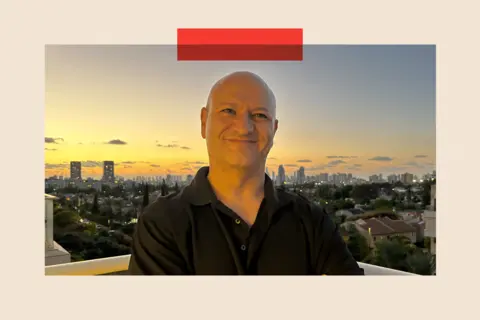
Hamas officials have said the group is willing to hand over political control of Gaza. The Trump ceasefire plan, to which it gave its qualified support, envisages “temporary transitional governance of a technocratic, apolitical Palestinian committee”.
But even if the group is willing to step back from a political role – something many Palestinians and Israelis still doubt – persuading its battle-hardened fighters to lay down their weapons is a big step for an organisation whose power, even before October 2023, relied heavily on the force of arms.
Rise of Hamas and its iron grip
To begin to answer the complex question of what may happen to Hamas next requires delving backwards into how exactly it consolidated power in the first place.
From its origins in the 1980s as an offshoot of the Egyptian Muslim Brotherhood and a rival to the secular Palestine Liberation Organization (PLO), Hamas morphed into a violent militant group responsible for the deaths of Israeli civilians.
Initially, Israel offered discreet support to Hamas, seeing it as a useful counterweight to the PLO and its dominant faction, Fatah, led at the time by Yasser Arafat.
“The major enemy was Fatah,” says Ami Ayalon, former head of Israel’s domestic security service, Shin Bet, “because they were the people who demanded a Palestinian state.”
But when Hamas launched deadly suicide bomb attacks in the 1990s and 2000s on Israelis, Israel responded with a series of high-profile assassinations.
A violent power struggle with Fatah left Hamas, which won a 2006 election, in sole control of the Gaza Strip.
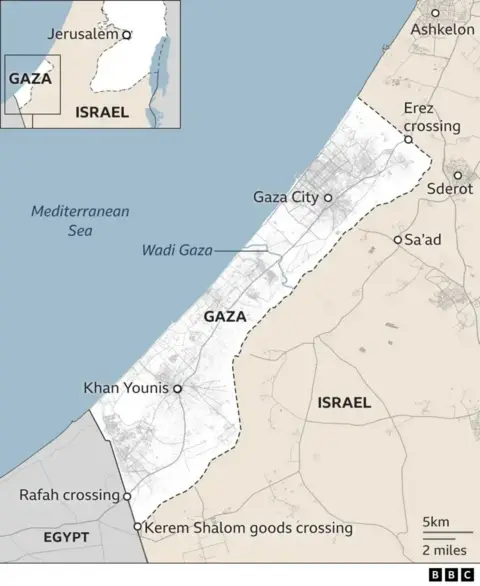
Eighteen years of Hamas rule have followed, characterised by an Israeli military and economic blockade, and bouts of armed conflict in 2008-09, 2012, 2014 and 2021.
Despite Israeli claims since October 2023 that “Hamas is ISIS”, the government of Israeli Prime Minister Benjamin Netanyahu has previously convinced itself that Hamas did not pose a strategic threat.
“His was a policy of managing the conflict,” says Mr Ayalon. “He said we are not going to solve it and we are totally against the reality of two states, so the only way is to divide and control.”
With Hamas in control in Gaza and the Palestinian Authority, led by President Mahmoud Abbas, ruling in part of the occupied West Bank, the Palestinians remained hopelessly divided, enabling Israel to argue that it had no unified leadership to negotiate peace with.
“[Netanyahu] did everything in order to support Hamas in Gaza,” Mr Ayalon says. “He let Qatar send them… more than $1.5bn.”
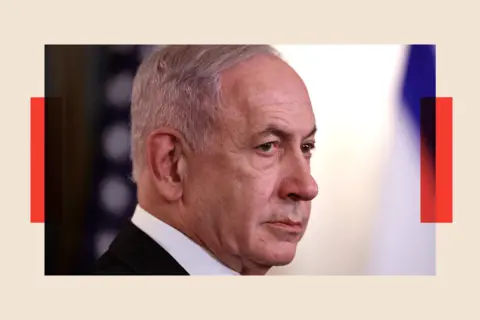 Getty Images
Getty ImagesThe money from Qatar was meant to pay the wages of civil servants and support the poorest families, but security chiefs feared it was being used for other purposes.
Mr Ayalon adds: “It was clear to the director of the Shin Bet and the head of Mossad that this money would go to military infrastructure.
Netanyahu has defended allowing payments to Hamas, saying it was meant to aid the civilian population.
Hamas was always preparing for war
As 7 October brutally revealed, Hamas was always preparing for war. Nowhere was this more obvious than in its elaborate network of tunnels.
Tunnels had already been used to mount attacks on Israeli army positions during the second Palestinian uprising, or “Intifada” that began in 2000.
In 2006, Hamas fighters used a tunnel under the border with Israel to attack a military post near Kerem Shalom, killing two Israel soldiers and kidnapping a third, Gilad Shalit.
He was held for five years until his release, in 2011, in exchange for 1,027 Palestinian prisoners, including Yahya Sinwar, who would go on to mastermind the Hamas attacks of October 2023.
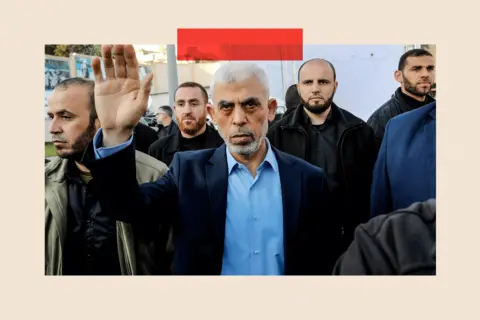 Getty Images
Getty ImagesOver time, Hamas’ tunnel network expanded, to include workshops, weapons-manufacturing sites and command centres.
Regional developments also played a role. In 2012, after the fall of the Libyan dictator Muammar Gaddafi and the brief rise to power of the Muslim Brotherhood in Egypt, Hamas was able to smuggle increasingly sophisticated weapons into Gaza, including sniper rifles, mobile rocket launchers and equipment for the manufacture of long-range rockets.
Hamas is thought to have benefitted from the help of technicians and fighters with experience of tunnelling in places like Lebanon and Iraq.
Iran was also a key supporter, seeing Hamas as a natural component in its “Axis of Resistance,” a loose coalition of militant groups across the Middle East with a shared antipathy towards Israel and the United States.
In 2020, a US State Department report said that Iran was providing around $100m a year to Palestinian militant groups including Hamas.
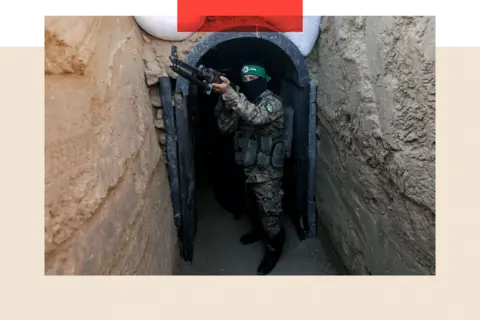 Yousef Masoud/SOPA Images/LightRocket via Getty Images
Yousef Masoud/SOPA Images/LightRocket via Getty ImagesSome tunnels were reportedly dug as deep as 230ft (70m) below ground, took years to build and cost tens of millions of dollars each. These were designed to protect senior Hamas commanders and house long-range weapons.
A local expert with extensive knowledge of the tunnels told the BBC the cost of the entire project totalled roughly $6bn (£4.5bn).
Precise figures are hard to come by, but it’s thought that the scattered network extended for as much as 250 miles (400km), in a strip of land just 26 miles long and, at its widest, seven miles across.
Tunnels: a project shrouded in secrecy
Public discussion of the tunnels – their location or cost – could expose Gazans to accusations of espionage, leading to arrest and worse. But many knew what was happening.
Local residents would see the tell-tale signs: sand and clay being removed, new entrances appearing unexpectedly and machinery being brought in under cover of darkness.
What began as an opportunistic response to Gaza’s isolation became, over the span of three decades, a multi-layered subterranean industrial and military complex.
It emerged later that much of it was concealed under Gaza’s civilian infrastructure, including hospitals, schools and, in the case of a tunnel containing a Hamas data centre, the headquarters of the UN Relief and Works Agency (UNRWA) in Gaza City.
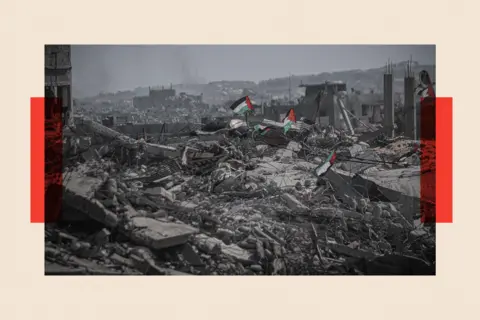 Anadolu via Getty Images
Anadolu via Getty ImagesAfter 7 October 2023, when Hamas fighters stormed into Israel, killing around 1,200 people and taking 251 hostage, it also became a massive underground prison. Not all of those held hostage were concealed in tunnels, but many were, especially as the war ground on.
Eli Sharabi, who became one of the most high profile of those taken, was first moved from a safe house into a tunnel after 52 of his 491 days in captivity.
“They tied us with ropes in our legs and hands,” he told the BBC earlier this month. “I fainted from time to time from the pain. One time they broke my ribs.”
By the time he was released, in February, he had lost more than 30kg (4st 10lb).
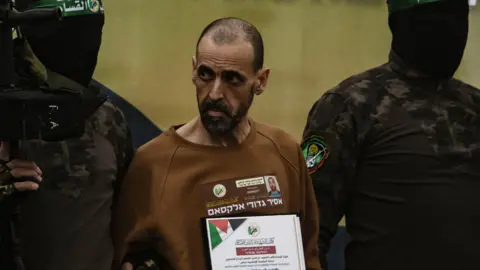 EPA
EPAHamas used the hostages as bargaining chips, to secure ceasefires or the release of Palestinians held in Israeli prisons. As negotiations over their fate continued, Hamas drip fed the Israeli public with a cruel series of videos, often showing the hostages in situations of extreme distress.
Eventually it was, says Dr Yousef, internal and external pressure that forced Hamas to abandon the strategy.
“Qatar, Egypt and Turkey and also the people here in displacement camps sent a strong message to Hamas leaders outside that enough is enough.”
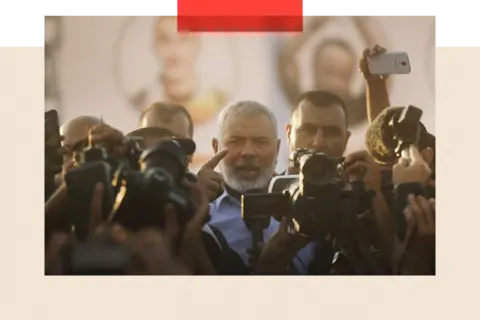 Getty Images
Getty ImagesIn the meantime, Israel continues to destroy what it can of the tunnel network, often demolishing civilian neighbourhoods above in the process.
And the job is far from done.
“According to publications from the defence establishment, estimates speak of damage to between 25% and 40% of the tunnels,” says Yehuda Kfir, an Israeli civil engineer and underground warfare researcher at Haifa’s Technion University.
“No doubt [Hamas] aspires to rehabilitate the infrastructure, including restoring tunnels that were dealt with in various ways by the IDF.”
A leadership in tatters
Restoring tunnels is one thing. Reconstituting the organisation is another. After the events of the past two years, Hamas’ leadership is in tatters.
Israel has gone to enormous lengths – in Gaza, Iran, Lebanon and Qatar – to eliminate the group’s key political and military figures.
From its best known, internationally recognisable leaders, travelling the world to promote their cause, to its battalion commanders on the ground in Gaza, Hamas has lost almost everyone of consequence.
Israel assassinated Hamas’s powerful leader, Ismail Haniyeh, in Tehran in July 2024.
Three months later, Haniyeh’s successor, the elusive Yahya Sinwar, was killed in the ruins of a house in Rafah.
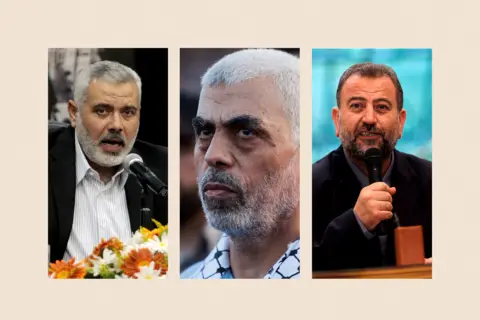 Reuters
ReutersDespite the loss of these leading figures – and thousands of members of its armed wing – the group battled on, recruiting a fresh generation of radicalised young fighters and splintering into small cells intent on carrying out hit-and-run guerrilla-style operations.
But Hamas in October 2025 is a pale shadow of the organisation that carried out the attacks of 7 October. Today’s leaders are less well known and, crucially, have little political experience.
Ezzedine al-Haddad, who is 55, now heads the five-member military council that commands Hamas’ armed wing, the Izz al-Din al-Qassam Brigades.
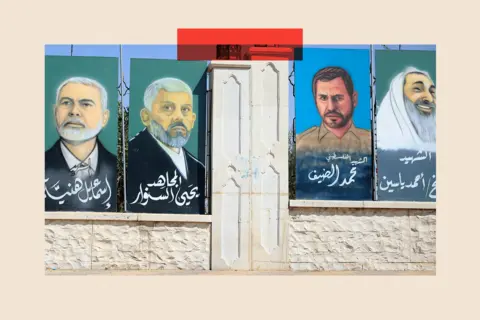 EPA/ Shutterstock
EPA/ ShutterstockOutside Gaza, the remnants of the group’s political leadership include Khaled Meshaal (the subject of a botched Israeli assassination attempt in Jordan in 1997), Khalil al-Hayya and Muhammad Darwish.
All are believed to have escaped death on 9 September, when Israeli jets attacked a building in Doha, Qatar, where they were meeting to discuss the latest US ceasefire proposals.
Hamas is ‘tired of war’
Despite the violence still raging in Gaza, the former Hamas adviser, Ahmed Yousef, says the group is tired of war.
Without mentioning 7 October directly, he describes the cause of the war as a “terrible mistake” and that a “different approach” is needed.
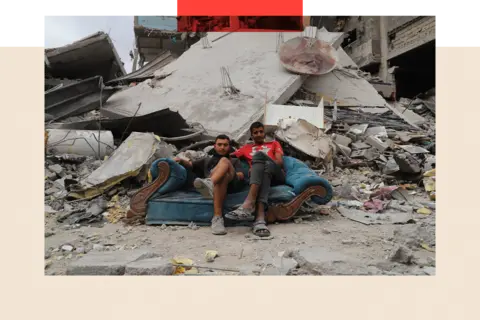 Anadolu via Getty Images
Anadolu via Getty Images“I’m talking to many of them and they have said that they are not interested in ruling Gaza anymore,” he says.
“But Hamas has more than 100,000 members and those people are not going to disappear.”
Hamas, he suggests, is looking to rebrand itself in order to continue to play a political role in the future, a process he likens to the ANC’s transition from guerrilla warfare to political rule in post-apartheid South Africa.
“If tomorrow there [are] elections,” he says, “I’m sure Hamas will come under different names, giving the impression it is more peaceful and more willing to be part of political life.
“Violence is not going to be part of any political party.”
Dr Milshtein is doubtful.
“Even if there will be a new local regime in Gaza, of course behind the scenes Hamas will be the dominant player,” he argues.
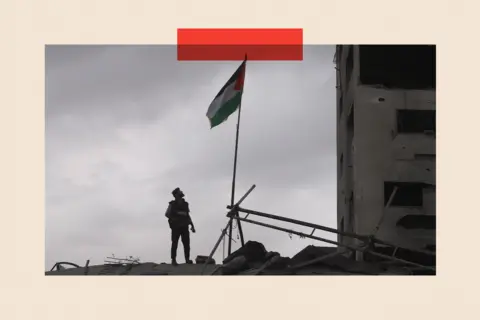 Anadolu via Getty Images
Anadolu via Getty ImagesDisarmament, he continues, is even less likely: he predicts another Gaza war within the next five years.
But Ami Ayalon, the former Shin Bet chief, believes Israel should find another way to tackle its enemy.
“Unless we defeat the ideology, they will flourish,” he says.
“The only way to defeat the ideology is by creating and presenting to the Palestinian and the Israeli people a new horizon. A horizon of two states.”
For now, that horizon does not exist, perhaps making Dr Milshtein’s prediction more likely than Ami Ayalon’s vision of a shared future.
But Hamas, however diminished, is far from a spent force. One way or another, Israel may have to deal with it for some time to come.
Top picture credit: Getty Images

BBC InDepth is the home on the website and app for the best analysis, with fresh perspectives that challenge assumptions and deep reporting on the biggest issues of the day. You can now sign up for notifications that will alert you whenever an InDepth story is published – click here to find out how.
Source link




